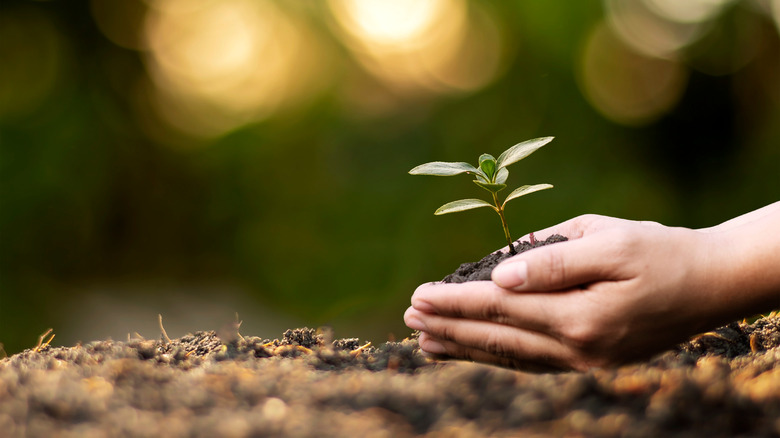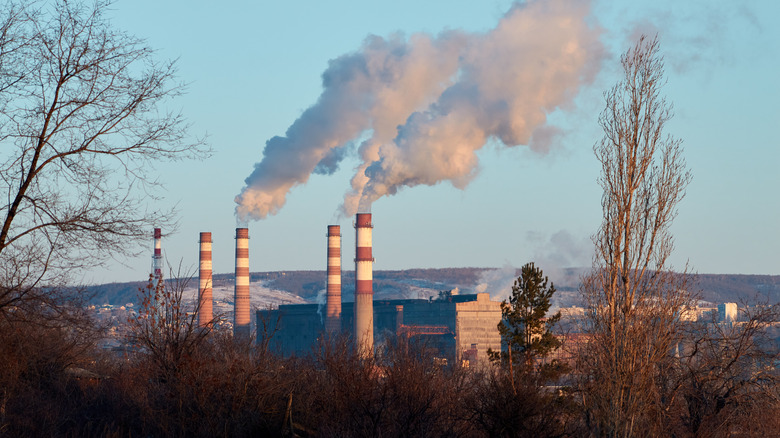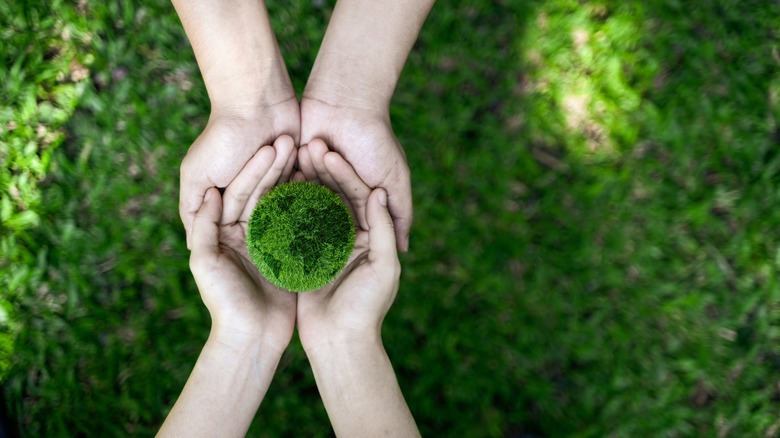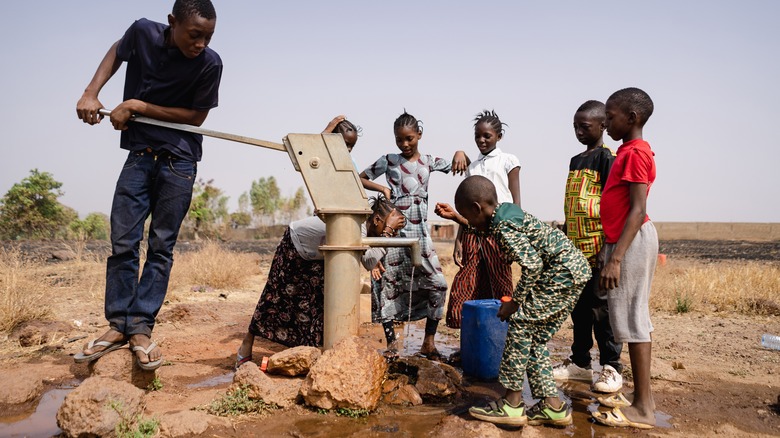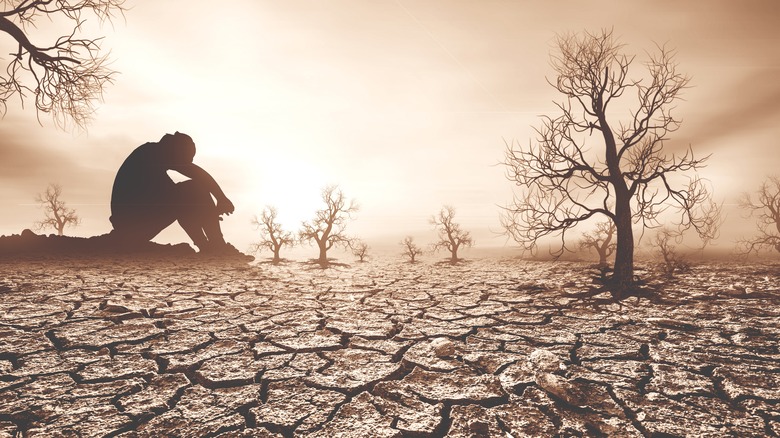Scientists Got Candid About Earth's True Carrying Capacity
Human population growth is a contentious issue in discussions about natural resources and climate change. At about 7.8 billion people and counting (via Population Reference Bureau), scientists and the general public are wondering just how many people Earth can reasonably accommodate before we exhaust its resources. To refer to this problem, scientists use the term "carrying capacity." This year, the United Nations utilized census data from 1,758 populations to conduct its annual world population study and came back with projections that are bringing the discussion to the foreground.
The current projection maintains that the human population will hit 8 billion by November of 2022. Lower mortality rates across much of the world factor into this rise in numbers, especially since life expectancy reached 72.8 years in 2019, according to the U.N. report. The global projection for the 2050s is expected to see an increase in life expectancy to 77.2. Fertility rates are also a contributing factor, and this has led scientists to a staggering projection of 10.4 billion people by the 2080s (via the United Nations).
Prehistory of Human Population Growth
In past, humans were no strangers to fluctuations in population. Homo sapiens go back roughly 200,000 years, and for much of that time, the population was minimal compared to what it is today. Life expectancy was lower, and from birth, the average prehistoric child wouldn't make it beyond the age of 10. The Population Reference Bureau estimates that at about 50,000 years ago, the human population was over 2 million, but this represented a 20,000 recovery after humans nearly became extinct 74,000 years ago. A volcanic eruption caused rapid climatic changes that brought our numbers down to about 10,000 adults (via Smithsonian).
Adaptability to changing environments proved to be a strength of Homo sapiens. Archaeological sites have shown that volcanic ash resulted in dying grass and drought, and while many species didn't make it, human cultural adaptations — such as stone tools, clothing, and fire — aided our ancestors' survival (via Smithsonian). Innovations continued to advance, and by around 10,000 years ago, the human population had risen to 5 million, per the Population Reference Bureau. This roughly coincided with the beginnings of agriculture, including the domestication of cows and the cultivation of various plants (via Smithsonian).
The Anthropocene Begins
The Anthropocene is an unofficial epoch in Earth's geological history. The Holocene is the textbook epoch that we live in, and it began at the end of the ice age approximately 11,700 years ago. It's no coincidence that the word "Anthropocene" comes from the Greek "Anthropos," for "man," and cene, for "new" (via National Geographic). It was coined by biologist Eugene Stoermer and atmospheric chemist Paul Crutzen in 2000. In introducing the term, they called attention to the impact human activity was having on the planet. This prompted further investigation by geologists regarding our place in the ecosystem (via Semantic Scholar). The results of these inquiries were eye-opening.
Rises in oceanic acidity, carbon dioxide emissions, and sea levels have been monitored by scientists over the past 60 years. Within that time, environmental issues went through a rapid acceleration linked to human activity, including factory farming and fossil fuel emissions. The off-the-books epoch hasn't supplanted the Holocene because scientists debate if the changes humans have made are sweeping enough to warrant a change in terminology. Some debate exactly when the dawn of our major impacts occurred, with some placing the Anthropocene at the start of Britain's industrial revolution — which resulted in the fossil fuel industry (via the Natural History Museum of London). By the time of the industrial revolution, population growth was exponential, cranking our numbers up to over 1 billion by 1850 (via Population Reference Bureau).
What is Carrying Capacity?
Carrying capacity is often defined as the number of members in a population that the environment can sustain. Scholars have debated the true carrying capacity of the planet — some believe we've hit the maximum, while others believe we haven't come close. Still others claim that human innovation will be our saving grace as it often has in past crises (via ScienceDirect).
The concept of carrying capacity predates modern concerns about sustainability. In 1679, the inventor of the microscope, Antoni van Leeuwenhoek, estimated that Earth could sustain over 13 billion people. But even though scientists were interested in population and the environment, the term "carrying capacity" was used in the 19th century to refer to herd management rather than ecology (via Live Science). Patrick Gerland, who works for the United Nations, said (via Live Science), "When it comes to carrying capacity, it's a matter of mode of production, mode of consumption, who has access to what and how." Meat production, according to the National Academy of Sciences, contributes to the overuse of land and also contributes to food insecurity among the impoverished (via PNAS). When looking at carrying capacity, the way we manage the resources at our disposal is an essential factor in how many people the planet can sustain (via Live Science).
Poverty and Population
Economic factors came into play with the recent United Nations study on world population trends. In impoverished countries, birth rates are high, but infant mortality is also higher than in first-world countries, and life expectancy is lower. Still, the U.N. report states that the least developed countries are expected to double in population size by 2050, thus straining their already limited resources. This will pose a great inhibition to achieving the U.N.'s 17 Sustainable Development Goals — a plan that all U.N. members agreed to in 2015 (via the United Nations).
These goals include the empowerment of women, quality education for all, and access to food and clean water. As the population increases in developing countries, those who are the most vulnerable to climate change — including small island developing countries — will be subject to greater struggles over this century (via the United Nations). This shows that while carrying capacity is a global issue, from country to country, certain regions have a more limited carrying capacity than others.
What Does the Future Hold?
Patrick Gerland pointed out that projections become shakier the further one looks into the future. For now, it is believed that the population will remain stable between 2080 and 2100, but after that point, it's difficult to say where we go from there. Much of the growth in population in progress now is the result of high fertility rates in the past, but whether this means we will hit the maximum number of humans the planet can sustain by 2080 or beyond is as unanswerable as it was centuries ago, per Live Science.
Variables involved include not only population growth but also whether we take measures to use natural resources more responsibly and slow the progress of climate change. In 2021, carbon emissions reached record heights, and climate finance fell below the yearly budget of 100 billion, per the United Nations. While nothing is written in stone on this issue, the U.N. notes that time is running low on ameliorating this crisis. As temperatures rise and people around the globe face drought and displacement, population growth may work in concert to exacerbate already devastating conditions.
